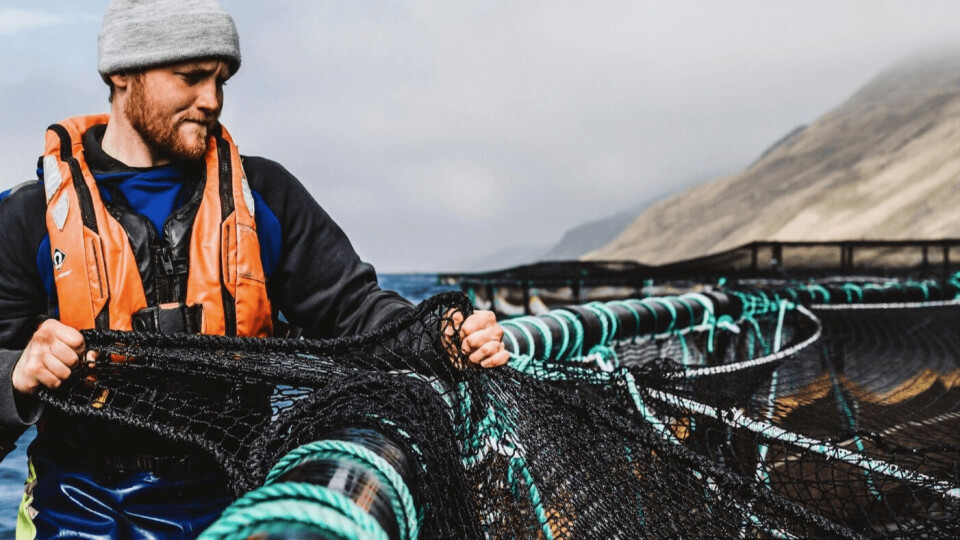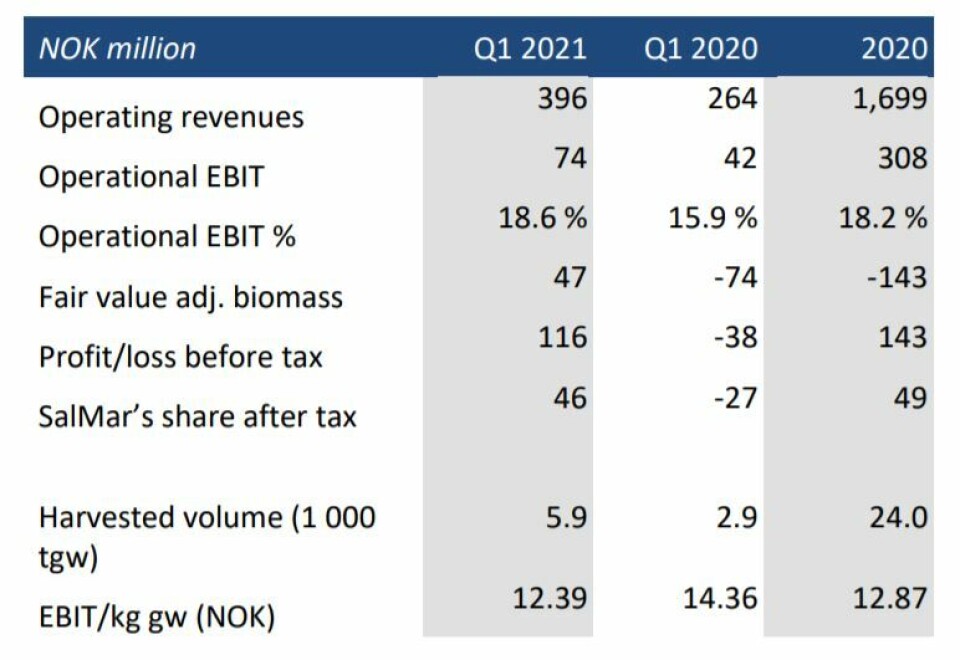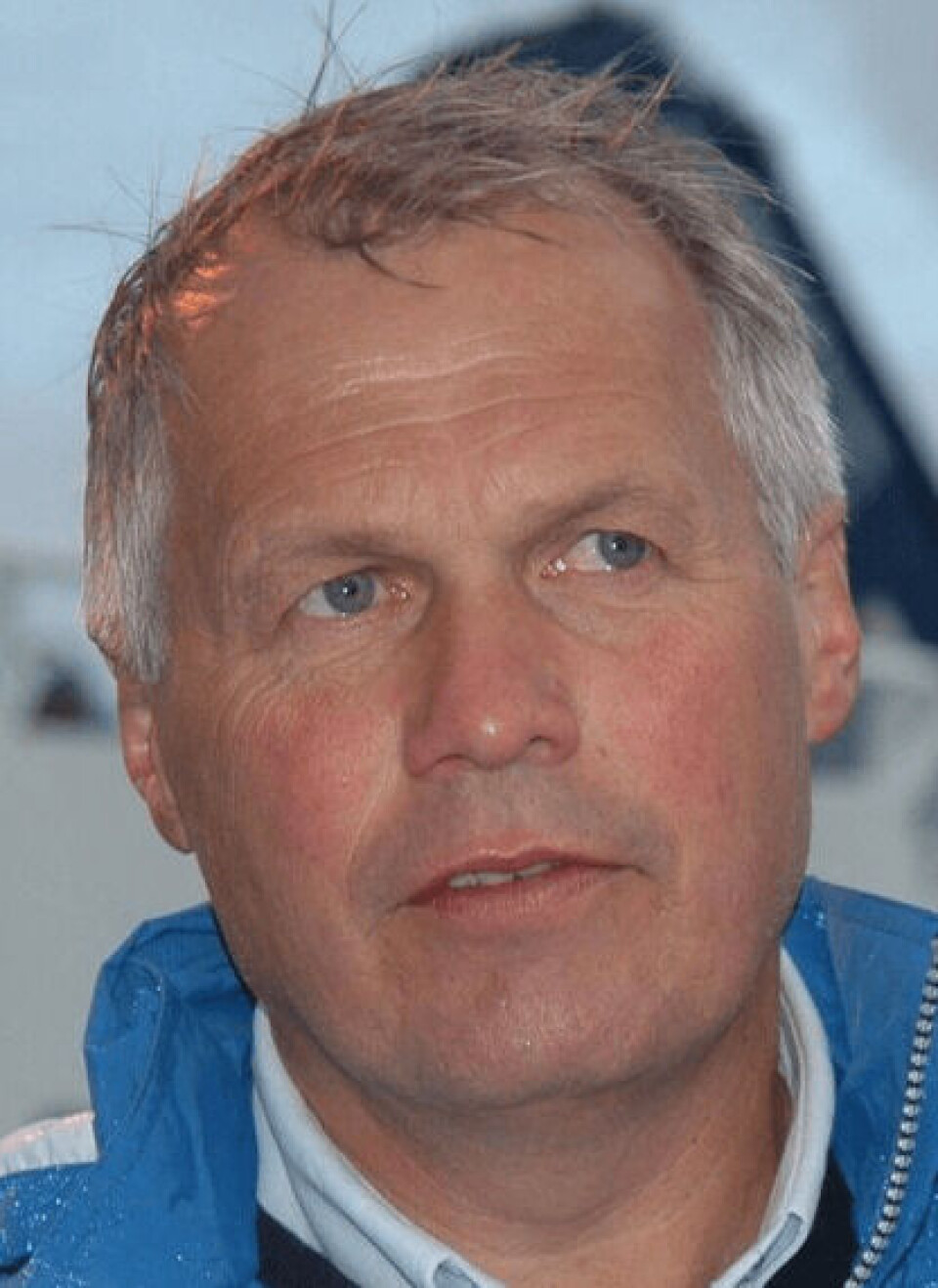
Profit and volume up in Q1 for Scottish Sea Farms
Scottish Sea Farms made an operating profit of around NOK 74 million (£6.3m) in the first quarter of this year, a 76% increase on the NOK 42m made in the same period last year, due to a larger harvest volume and revenues, co-owner SalMar said in its Q1 report today.
SSF harvested around 5,900 gutted weight tonnes of salmon in the quarter, more than double the 2,900 tonnes harvested in Q1 2020.
Gross operating revenues were NOK 396m in Q1 2021, compared with NOK 264m in the same period last year. Pre-tax profit in Q1 amounted to NOK 116m (Q1 2020 NOK -74m), including NOK 46m for fair value adjustment of biomass.

Low sea lice levels
EBIT per kg gutted weight came to NOK 12.39, compared with NOK 14.36 per kg in the same period last year. SalMar said the decrease was attributable to lower salmon prices, partly offset by lower costs at harvest.
SSF’s contract rate for the quarter came to 50%.
“There is good status of the standing biomass with low sea lice levels in all regions,” SalMar said.
Scottish Sea Farms expects to harvest 36,000 tonnes of salmon in 2021, half as much again as the 24,000 gwt harvested in 2020.
Solid in Norway
SalMar’s own performance in Norway and Iceland, where its subsidiary Icelandic Salmon operates, was also good in Q1.
It reported continued solid operational performance and increasing salmon prices
Operational EBIT totalled NOK 627m and NOK 17.02 per kg
Fish Farming Central Norway and Fish Farming Northern Norway with stable development and good results. Icelandic Salmon also had positive results and lower costs compared to previous quarters.
SalMar is maintaining harvest guidance of 163,000 gwt in Norway and 14,000 gwt in Iceland in 2021.

Steady price rise
“Towards the end of the first quarter, the price of salmon rose steadily compared with the levels seen in the autumn of 2020 and at the start of this year. Together with a strong operational performance from our employees along the entire value chain, this enabled SalMar to announce yet another good result, with margins up on the previous quarter,” said SalMar chief executive Gustav Witzøe.
After a year of the Covid pandemic and a market characterised by global uncertainty, the roll-out of mass vaccination programmes in large parts of the world has helped to make the outlook brighter for the salmon industry, said SalMar. The price of salmon has now returned to the pre-pandemic level.
‘Unwavering confidence’
“We have always had unwavering confidence in the salmon farming industry and continue to invest in new smolt facilities and processing plants, as well as coastal and offshore farming,” said Witzøe.
“SalMar is well placed to continue growing sustainably, not for growth’s sake alone, but because salmon is a sustainable marine protein which is needed by Norway and the rest of the world. SalMar has been producing farmed salmon for 30 years and intends to carry on doing so indefinitely. Food will never go out of fashion.”























































